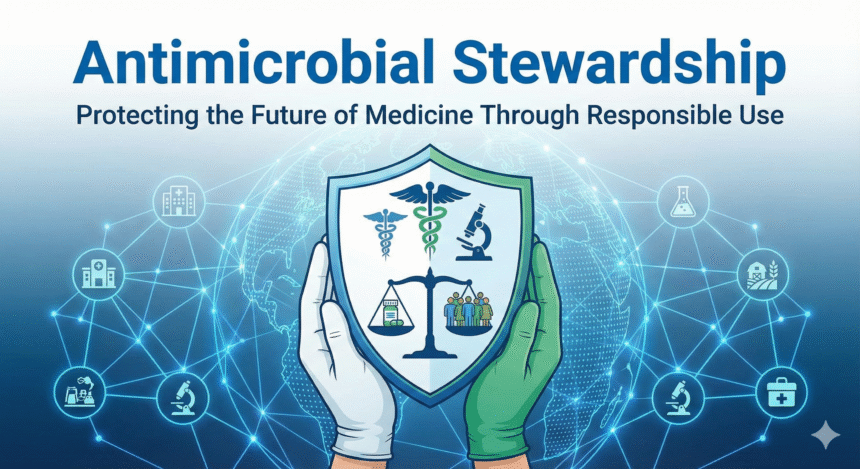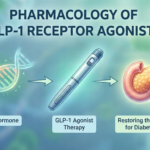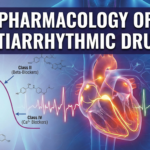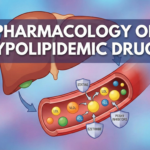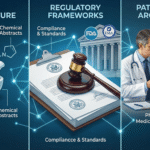Antimicrobial stewardship is the coordinated set of actions that ensures the optimal selection, dosing, route, and duration of antimicrobial therapy to improve clinical outcomes while minimizing toxicity, resistance, and costs. It is operationalized globally through frameworks such as the CDC Core Elements, IDSA/SHEA implementation guidelines, WHO AWaRe resources, and national guidance like NICE, which together define governance structures, practical interventions, and measurement strategies for sustainable impact across care settings.
What it is and why it matters
Antimicrobial stewardship (AMS) aims to deliver the right drug, at the right dose, by the right route, for the right duration, to the right patient, thereby improving cure, limiting adverse events such as Clostridioides difficile infection, and slowing antimicrobial resistance. Foundational consensus definitions and program goals emphasize better clinical outcomes, fewer harms, and cost-effectiveness, anchoring AMS as a core patient safety and public health priority.
Global policy context
The World Health Assembly endorsed the WHO Global Action Plan on AMR in 2015, mandating country-level strategies to optimize antimicrobial use and strengthen surveillance, prevention, and research. WHO’s AWaRe system now provides a stewardship suite—classification, indicators, targets, and an antibiotic book—to plan, implement, and evaluate national and facility-level AMS activities.
Core program elements
The CDC’s Core Elements for hospitals outline seven pillars: leadership commitment, accountability, pharmacy expertise, action, tracking, reporting, and education, with practical implementation resources and prioritization guidance updated through 2022–2025. These elements are adaptable to all hospitals, including small and critical access facilities, and align with international guidance from IDSA/SHEA and national bodies.
Governance and team composition
Successful stewardship requires executive support, designated clinical leadership (often co-led by an infectious diseases physician and a pharmacist), defined responsibilities, and protected resources for analytics and education. IDSA/SHEA strongly supports infectious diseases clinician leadership with multidisciplinary collaboration spanning pharmacy, microbiology, information technology, nursing, and frontline prescribers.
High-impact stewardship actions
IDSA/SHEA identifies two core strategies—preauthorization and prospective audit with feedback—as cornerstone interventions that consistently improve antibiotic use and related outcomes when reliably implemented. Complementary tactics include guideline-driven syndrome pathways, targeted reductions of high-risk agents for C. difficile, antibiotic time-outs and stop orders, and optimized dosing and IV-to-oral transitions.
Diagnostic stewardship
Partnership with the microbiology laboratory to optimize antibiograms, selective/cascade reporting, and rapid diagnostics—supported by active stewardship interpretation—improves empiric targeting and shortens time-to-appropriate therapy. Use of procalcitonin algorithms and nonculture-based fungal markers can further guide duration and antifungal decisions in select populations when embedded into clear protocols.
Measurement and feedback
Programs should track antibiotic use preferably by days of therapy, triangulate with quality indicators, resistance trends, and C. difficile rates, and provide regular feedback to prescribers, services, and leadership to drive improvement. CDC resources, including NHSN’s Antimicrobial Use and Resistance module and standardized measures, support benchmarking and targeted evaluation at the hospital level.
Evidence of benefit
Syntheses summarized in clinical guidance report reduced antibiotic exposure, fewer C. difficile events, improved susceptibility patterns, and cost savings with stewardship, alongside better dosing and de-escalation practices without harm to mortality or length of stay when well-implemented. These outcomes reinforce stewardship’s role in patient safety and health system performance, particularly when interventions are tailored to local epidemiology and workflow.
National guidance and primary care
NICE NG15 provides systems and processes for prudent antimicrobial use across the NHS, emphasizing review, documentation, delayed prescribing where appropriate, and regular performance feedback to prescribers. The UK inpatient toolkit “Start smart then focus” operationalizes early appropriate therapy followed by timely review and optimization, complementing IDSA/CDC approaches in hospital settings.
WHO AWaRe to guide choices
The AWaRe framework groups antibiotics into Access, Watch, and Reserve to support formulary decisions, surveillance, and national targets for optimizing consumption and preserving last-line agents, with practical toolkits for implementation and evaluation. Embedding AWaRe into local guidelines aligns prescribing with global stewardship objectives while remaining sensitive to local resistance and access realities.
Implementation across settings
Core Elements scale across hospitals, long-term care, and ambulatory clinics, with setting-specific adaptations for resources, data availability, and workflows to ensure feasibility and impact. IDSA/SHEA highlights approaches for community hospitals, NICUs, nursing facilities, and immunocompromised care, including tele-stewardship, focused pathways, and tailored diagnostic strategies.
Special populations and pathways
Evidence-based pathways for fever and neutropenia, neonatal sepsis, antifungal stewardship in hematologic malignancies, and careful support in terminal care can reduce unnecessary exposure while maintaining safety, especially when codesigned with specialty teams. Measured rollouts with targeted metrics enable learning health system cycles in these complex populations.
Education, culture, and behavior
Sustained prescriber and nursing education tied to audit-and-feedback, electronic decision support, and easy-to-use local pathways outperforms didactic materials alone, facilitating durable practice change. CDC and professional societies provide tiered curricula and toolkits to build competencies across roles and disciplines, including nursing partnership models and electronic feedback reports.
Economic and societal stakes
Macro-economic analyses highlight substantial global mortality and trillions in cumulative economic costs by 2050 without coordinated action on AMR, strengthening the investment case for stewardship, prevention, and innovation alongside access equity. Stewardship is thus a clinical, operational, and economic imperative that complements infection prevention and essential medicines policy.
Practical startup checklist
- Secure leadership commitment with time, analytics support, and reporting pathways to the board and clinical governance.
- Appoint accountable clinical leads, ideally co-led by infectious diseases and pharmacy with clear role delineation.
- Launch at least one core action: preauthorization and/or prospective audit with feedback focused on high-yield syndromes or agents.
- Publish concise local guidelines aligned with AWaRe and resistance data, including duration defaults and IV-to-oral criteria.
- Stand up measurement of days of therapy, C. difficile, and selected appropriateness indicators, with routine service-level feedback.
- Provide targeted, case-based education integrated into rounds, order sets, and EHR decision support, avoiding standalone didactics.
Common pitfalls and fixes
- Insufficient protected time and analytics support undermines reliability; solving this requires explicit resourcing and executive sponsorship with regular dashboards to leadership.
- Guideline sprawl without EHR integration limits uptake; embed order sets, time-outs, and stop dates in prescribing workflows to nudge default best practice.
- Overreliance on education alone yields transient gains; anchor behavior change with audit-and-feedback, peer comparison, and system-level defaults.
References
- Barlam TF, Cosgrove SE, Abbo LM, MacDougall C, Schuetz AN, Septimus EJ, et al. Implementing an Antibiotic Stewardship Program: Guidelines by the Infectious Diseases Society of America and the Society for Healthcare Epidemiology of America. Clin Infect Dis. 2016;62(10):e51–77.
- Centers for Disease Control and Prevention. Core Elements of Hospital Antibiotic Stewardship Programs. 2025.
- World Health Organization. WHO AWaRe system for antimicrobial stewardship. 2025.
- National Institute for Health and Care Excellence (NICE). Antimicrobial stewardship: systems and processes for effective antimicrobial medicines use (NG15). 2015.
- UK Health Security Agency/Department of Health and Social Care. Antimicrobial stewardship: Start smart then focus. 2023.
- Shrestha J. Antimicrobial Stewardship. In: StatPearls. Treasure Island (FL): StatPearls Publishing; 2023.
- World Health Organization. Global action plan on antimicrobial resistance. 2015.
- O’Neill J. Tackling drug-resistant infections globally: final report and recommendations. Review on Antimicrobial Resistance; 2016.
- Brunton LL, Hilal-Dandan R, Knollmann BC, editors. Goodman & Gilman’s The Pharmacological Basis of Therapeutics. 14th ed. New York: McGraw-Hill; 2022.
- Katzung BG, Vanderah TW, editors. Basic & Clinical Pharmacology. 16th ed. New York: McGraw-Hill; 2021.
- Bennett JE, Dolin R, Blaser MJ, editors. Mandell, Bennett, & Dolin: Principles and Practice of Infectious Diseases. 9th ed. Philadelphia: Elsevier; 2020.
- Centers for Disease Control and Prevention. Hospital Antibiotic Stewardship Programs: 2019 (Core Elements update). 2019.
📚 AI Pharma Quiz Generator
🎉 Quiz Results
Medical Disclaimer
The medical information on this post is for general educational purposes only and is provided by Pharmacology Mentor. While we strive to keep content current and accurate, Pharmacology Mentor makes no representations or warranties, express or implied, regarding the completeness, accuracy, reliability, suitability, or availability of the post, the website, or any information, products, services, or related graphics for any purpose. This content is not a substitute for professional medical advice, diagnosis, or treatment; always seek the advice of your physician or other qualified health provider with any questions you may have regarding a medical condition and never disregard or delay seeking professional advice because of something you have read here. Reliance on any information provided is solely at your own risk.


